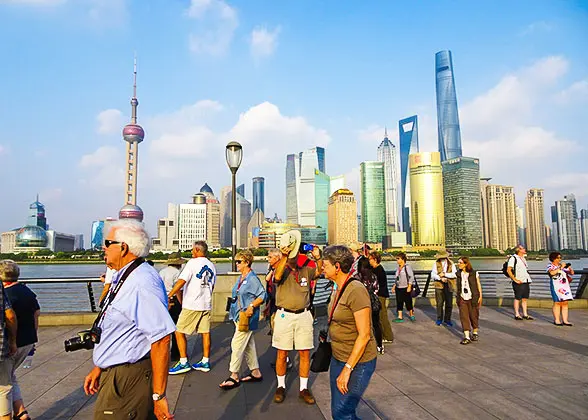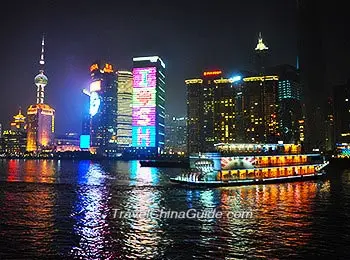Places of Interest in Shanghai: 12 Historical Sites to Explore
Most people’s first impression of Shanghai is a metropolitan city with great modern vitality. But few know that its history can date back to over 6,000 years ago and can now be sampled by the numerous historical places in Shanghai. In light of this, this article is going to introduce you to 12 of the most famous Shanghai places of interest.
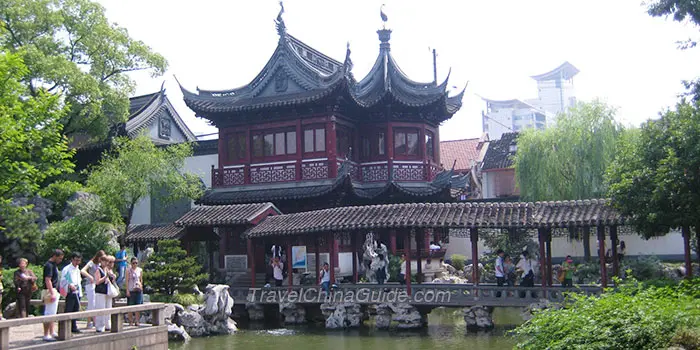
The top Shanghai point of interest is the Yu Garden. It was constructed in 1559 in the Ming Dynasty (1368-1644) by a local governor and boasts a history of more than 460 years. He named it ‘Yu’ for the purpose of happiness and safety. It is currently the best garden in the traditional southern China style in Shanghai, finely laid out with quaint pavilions, zigzag bridges, clear ponds, grotesquely shaped rocks, vibrant trees and plants, etc. Besides, tourists can feast their eyes on the paintings and works of calligraphy of Shanghai style in the Ancient Library (Cangshulou).
 Recommended Tour:
Recommended Tour:  One Day Shanghai Highlights Tour from $109
One Day Shanghai Highlights Tour from $109
 Book Yu Garden Tickets
Book Yu Garden Tickets
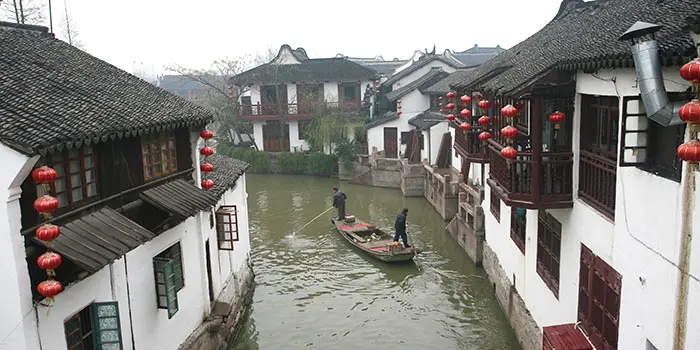
Zhujiajiao Water Town is a fan-shaped town nestling upon the Dianshan Mountain and the Dianshan Lake, with a history of more than 1,700 years. Such a good location even earns it the name “Venice in Shanghai”. This town is divided by the Caoganghe River and either of its banks has winding alleys, paths paved with granites and many delicate buildings with white walls and grey tiles. Famous scenic spots here are the Fangsheng Bridge, North Street and the Post Office of Qing Dynasty (1644-1911). The best way to savor the tranquility here is to take a boat slowly traveling along the waterway while appreciating the views of both banks.
 Recommended Tour:
Recommended Tour:  2 Days Shanghai tour with Zhujiajiao Water Town from $299
2 Days Shanghai tour with Zhujiajiao Water Town from $299
 Book a Zhujiajiao Water Town ticket
Book a Zhujiajiao Water Town ticket
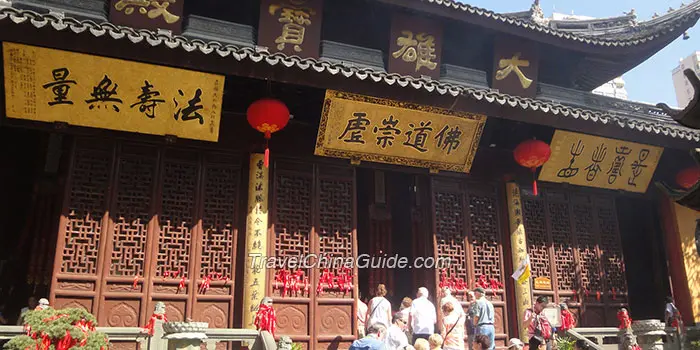
The Jade Buddha Temple was built in 1882 in the Qing Dynasty. This temple is famous for two precious jade Buddha statues, which were moved from Myanmar. The first statue is a sitting Buddha with the height of 1.92m (6.3ft). It is lavishly decorated with gold foil and diamonds. The second one is a reclining Buddha with its right hand holding its head. Its peaceful look copies how Shakyamuni passed away at the age of 80. In addition, tourists to the Temple will know more about Buddhism through the displayed calligraphy of scriptures, as well as many stone carvings. This temple is one of the Shanghai places of interest that local people often come to pray. Every January 1st and 15th of the Chinese lunar calendar, many people will come here to burn incenses, in order to ring in an auspicious Chinese New Year.
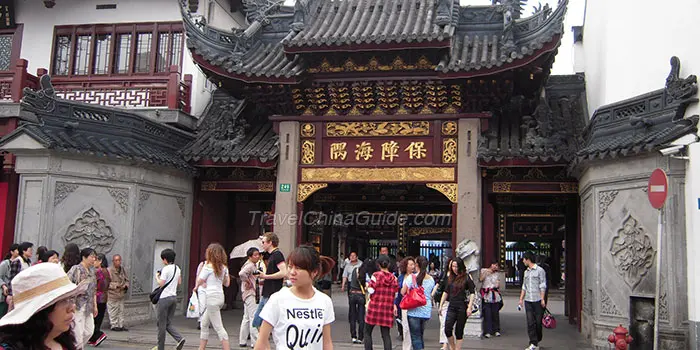
Old City God Temple is a Taoist temple built from 1403 to 1424 in the Ming Dynasty. It is another popular Shanghai point of interest for people to pray for blessings. It comprises nine small temples enshrining different Gods. People in his/her Zodiac Year of Birth should come to Yuanchen Hall to pray for good luck and happiness. If someone suffers from illness, in particularly eye problems, they should worship the statue in the Cihang Hall. Those who want to make a fortune should visit Caishen Hall. And people eager for academic or career achievement should burn incenses in the Wenchang Hall. Surrounding the temple, there are many restaurants selling local snacks and delicacies. After worshipping the god, you can go there to treat yourself.
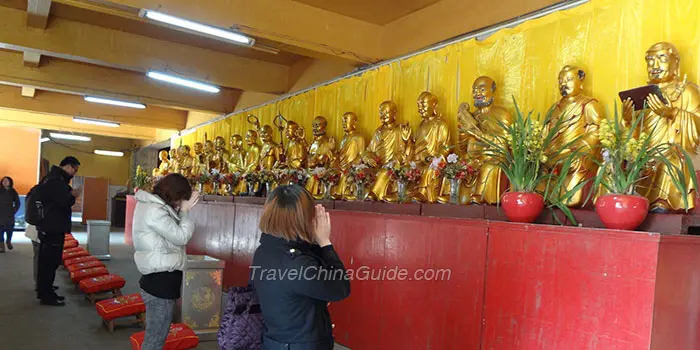
With a history of more than 780 years, Jing’an Temple is in sharp contrast with its surrounding skyscrapers. Unlike other Shanghai historical sites laid out along the central axis, Jing’an Temple has its main hall linked with other buildings and therefore forms a small square in the center. Tourists usually tour around the square to visit the 1st floor, and then go upstairs to visit the 2nd floor. Upon walking into this Tibetan Buddhist temple, a large incense burner made of white copper will come into your sight. On the first floor, tourists can visit the Guanyin statue made of camphor wood in the east wing room as well as the Shakyamuni jade statue in the west wing room. In the northwest corner is the mysterious Jing’an Pagoda. Since it stores 868 Buddha statues and many religious treasures, this pagoda is not open to tourists. Nevertheless, the main hall on the second floor is absolutely eye-opening. Inside the main hall, no one can take their eyes off the gigantic silver Buddha statue of 15tons. The mural on its reverse is also amazing. Gems, corals, shells, emeralds and pearls of various colors are pieced into the pattern which tells a Buddhist story. Even the frame of the mural is taped with gold foil.
Among all the temples in Shanghai, Longhua Temple owns the longest history of more than 1,700 years. The solemn main hall is a must for tourists. It has three golden Buddha statues and its walls are carved with Buddhist allusions and guardians. Outside the temple, the Bell Tower and the Drum Tower stand on the east and the west respectively. Local people usually strike the bell to ring in the Chinese New Year. Interestingly, many people come to this Shanghai place of interest not only for praying for good fortune, but also having a bowl of vegetarian noodles. And there are often lines outside the vegetarian restaurant! Also, Longhua Temple usually holds temple fairs in March and April. During the fair, tourists can try local snacks and watch the dragon & lion dance as well as the performance of local craftsmen.
Longhua Pagoda is beside the Longhua Temple. It was built in the Three Kingdoms (220-280), damaged in the later Tang Dynasty (618-907) and reconstructed in 977 in the Northern Song Dynasty (960-1127). The current pagoda is 40m (130ft) high and made of brick and wood. Each of its seven floors is an octagon and has up-curling eaves with wind bells hanging on. However, due to the soft soil, Longhua Pagoda now inclines and is not available to enter.
Longhua Pagoda is beside the Longhua Temple. It was built in the Three Kingdoms (220-280), damaged in the later Tang Dynasty (618-907) and reconstructed in 977 in the Northern Song Dynasty (960-1127). The current pagoda is 40m (130ft) high and made of brick and wood. Each of its seven floors is an octagon and has up-curling eaves with wind bells hanging on. However, due to the soft soil, Longhua Pagoda now inclines and is not available to enter.
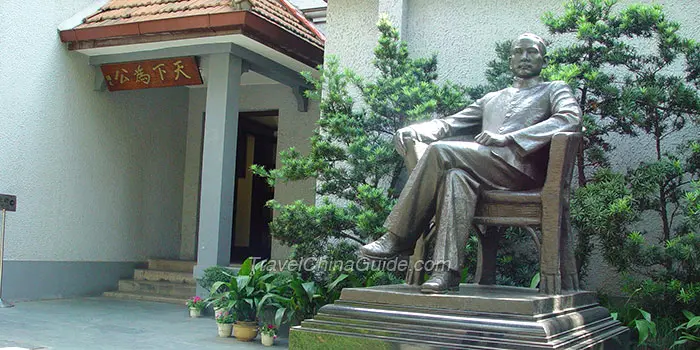
Sun Yat-sen (1866-1925) is the pioneer of the China’s democratic revolution. He lived in this residence from 1918 to 1925. After he died, a Memorial Hall was built in memory of him beside his former residence, both with European style. The Memorial Hall has a statue of Sun Yat-sen and often holds exhibitions about him. The second floor displays his daily articles, clothes, calligraphy and published literatures. Go through the Memorial Hall’s back door and you will enter Sun Yat-sen’s former residence. After crossing the small garden planted with holly, camphor and magnolia, you can tour the kitchen, dining room and the living room on the first floor, and then the bedroom, study room and the mini living room on the second floor. Most of the objects and furniture are the original ones and they are also placed as they were during 1920s and 1930s.
8
Jiading Confucian Temple
Jiading Confucian Temple was built in 1219 and is now one of the well-preserved Confucian temples in China. Thus, people interested in Confucianism should not miss this Shanghai place of interest. Three stone archways, three stone bridges and two gates will lead tourists to the main hall, Dacheng Hall. As the main building of Jiading Confucian Temple, Dacheng Hall preserves the architectural style of the Ming Dynasty and exhibits the statue of Confucius as well as some ancient instrument used for worshipping him. Moreover, Sep. 28th is the birthday of Confucius. And a large memorial ceremony is held here on this day every year. Other accessory buildings enable people to learn the imperial examination in ancient China. For instance, tourists can see the test paper of the top performers at that time. Many wax figures also show people how the examination was conducted.
Guyi Garden ranks first among the classical gardens in Shanghai, hence a worthy Shanghai point of interest to visit. Built in the Ming Dynasty 400 years ago by a bamboo sculptor, Guyi Garden is renowned for the bamboo patterns which can be seen everywhere. If you take a careful look, you will find that every pavilion, corridor, pillar, hall and terrace is carved with the bamboo patterns. Actually, “Guyi” in Chinese means the lush bamboo. The entire garden is divided into different areas according to their different sceneries. The most popular three are the Flower Fragrance Park, the Crane in Stream Pond and the Moonlit Bamboo Garden. All these sites were delicately laid out and bring a serene atmosphere. Tourists can also take a walk on the pebbly road and appreciate the quaint buildings to the sound of the gurgling creek.
10
Songze Cultural Ruins
Songze Cultural Ruins is currently the oldest historical place in Shanghai. Many relics of a primitive tribe which existed 5,000 to 6,000 years ago have been unearthed here. Songze Cultural Ruins altogether has three layers. The first layer features tawny soil and the potteries, stone wares and bronzewares made during the late Western Zhou Dynasty (1046-771BC) and the Spring and Autumn Period (770-476) were unearthed. The middle layer features grey soil and was a burial site at the time. The lower layer features greyish blue soil and was used by ancient people to place production tools and build cellars. Surprisingly, in the cellar, people found traces of rice. This shows that perhaps ancient people had already learned how to plant rice more than 6,000 years ago.
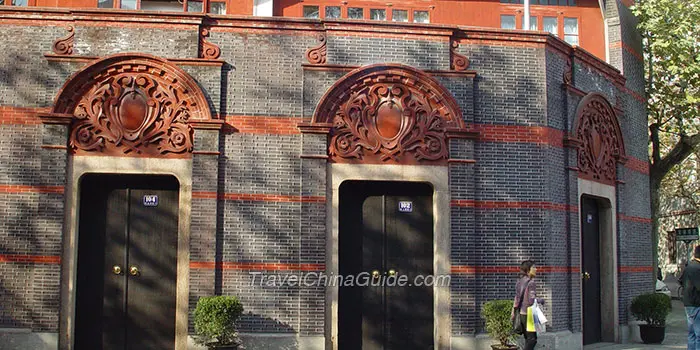
Although this Shanghai place of interest is simply an 18 sq. m. (22 sq. yd.) living room, it is unique for witnessing the birth of the Communist Party of China. On July 23rd, 1921, the first national congress of the Communist Party of China was held here. All the furniture and objects tourists see now are modelled on the original ones. Beside this living room tourists can also visit the Memorial Hall. The exhibited materials and photos bring you a vivid lesson of China’s modern history.
12
Songjiang Square Pagoda
Built in the Northern Song Dynasty with a history of about 900 years, this pavilion-like pagoda made of wood and brick is well preserved, being one of the best-preserved ancient towers in China. Songjiang Square Pagoda is 48.5m (160ft) high and has nine floors, each in square and decreasing in size from bottom to the top. Surrounded by the lush trees, Songjiang Square Pagoda is more conspicuous for its large eaves and the slender tower body. People can climb the ladder to the fifth floor and enjoy the panorama of the whole Songjiang Garden.
Apart from the pagoda itself, many other Shanghai historical sites nearby can also please your eyes. For example, the screen wall in front of the pagoda was built in 1370 and it was delicately carved with animals, trees, flowers and treasures. To the north of the pagoda is the Tianfei Temple. In ancient times, many fishermen and sailors burnt incenses here to pray for safety.
Apart from the pagoda itself, many other Shanghai historical sites nearby can also please your eyes. For example, the screen wall in front of the pagoda was built in 1370 and it was delicately carved with animals, trees, flowers and treasures. To the north of the pagoda is the Tianfei Temple. In ancient times, many fishermen and sailors burnt incenses here to pray for safety.
You May Like
- Last updated on Aug. 14, 2025 by Demi Li -
